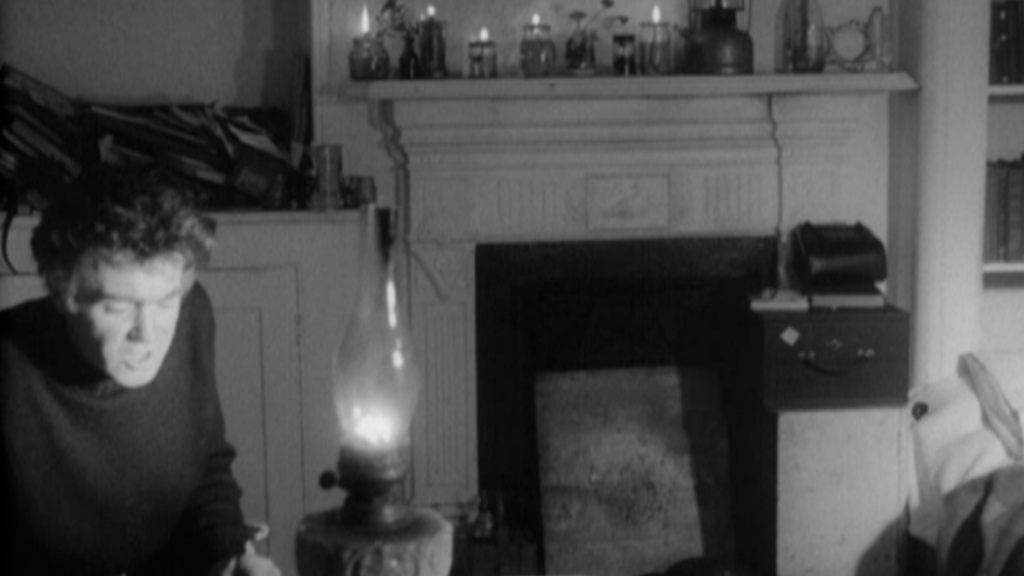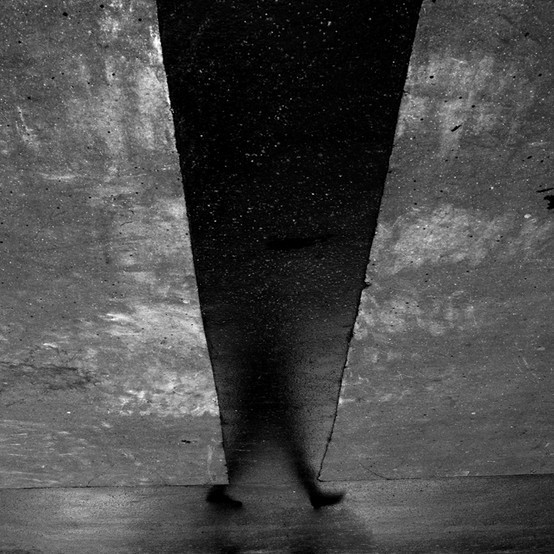I first learned of the poet W.S. Graham and the NYRB pamphlet of his name, W.S. Graham, at a reading of his work at Greenlight Bookstore in the Fort Greene neighborhood of Brooklyn in early December. It feels important to me, now, to mention these geographical and temporal aspects of my first encounter with Graham because he is an eminently local poet: a poet of time and place and specific experience.
W.S. Graham was born in Greenock, Scotland in 1918 and died in Madron, West Cornwall, England, in 1986. He moved to Cornwall in the 1940s and never left with the exception of a few excursions: to London, New York, Italy, and once, late in life, to Crete. His world was thoroughly Cornish, with exception of his correspondences by post. It was the world of the Godrevy Lighthouse, the Botallack mines, the wildlife of the Cornish coast (kestrels, kittiwakes, snipes, owls), his wife Nessie Dunsmuir, and his friends who lived in Cornwall, many of whom were (later celebrated) painters of the St.Ives School of British Abstraction .
Since his death in 1986, Graham’s oeuvre and his archive have faced renewed interest and scrutiny, at least from the English-English literary sphere. Douglas Dunn, in the Forward to Graham’s New Collected Poems, published by Faber in 2004, writes “It isn’t true that “if it’s true, it will survive; someone, somewhere, has to keep saying it’s good. ” And people kept on saying Graham’s work was good. “…[S]teadfastness of supporters (and the steadfastness, the indestructibility of the work) have contributed to Graham’s reappearance in this necessary and excellent volume.” (XV) The 2004 collection also incorporates new archival work, including complete selections from Graham’s first three published books, and unpublished selections from his notebooks.
Graham, meanwhile, has not been published in the U.S. before, with the exception of, as one of the poets reading at Greenlight Bookstore back in December announced, an out of print paperback published in the 1980s by a now defunct press. So, reading Graham is in part about discovering a wall between English Poetry and American Poetry, a gap mostly cultural created by the nature of the circulation of economic capital (presses, shops, advertisements), and social capital (awards, who talks to who, etc). Reading W.S. Graham as an American is inherently a question about this wall. How solid is it? How penetrable is it? How does two different realities exist cleaved by a wall?
Most of that, I cannot answer. Though I can note two things. First, that publication by the NYRB can guarantee Graham some level of access to the American poetry establishment evidenced by the Full Professorships obtained by most of the poets reading this particular night at Greenlight Bookstore and the wide availability of W.S. Graham in most independent bookstores and Amazon.com. Second, that though the introduction to W.S. Graham emphasizes Graham’s own preoccupation with the possibility of language as the main theme undergirding the collection’s selection, this seems to me a kind of forced move. Forced by the fact that as Americans, immersed in American literary culture, the visual culture that Graham lived and breathed is probably otherwise inaccessible.
W.S. Graham (2018) is a selection of poems from the Faber New Collected Poems (2004). This is not clear from the cover, the copyright, or the back cover. But it’s clear from comparing the Table of Contents of both texts. As Hofmann acknowledges in his introduction, with the exception of two poems, all of selection is from The Nightfishing (1950) on; and most of the book being from The Dark Dialogues (1955) on. It’s also clear from skimming the table of contents that there is a distinct preference for exhibiting Graham as a poet of language (generously maybe: a poet phenomenologist of language). Of the 46 selected poems, 10 explicitly reference “dialogues” or “language” or obviously refer to the act of speaking or hearing. An additional four to eight poems reference speaking or silence in the first stanza. At least a similar number of other poems might arguably beg interpretation as ars poetica.
Graham was in fact very concerned with speaking, with silences, with interpretation, and with the difficulties of articulating or transmitting messages to another person. An article first published by Graham in 1946, “Notes on a Poetry of Release,” defines poetry as language on the crux of incomprehension and re-articulation. Graham writes,
All of the poet’s knowledge and experience (as far as the people who wait outside his gates are concerned) is contained in the language which is obstacle and vehicle at the same time. The shape of all of us is in this language. Our riches and poverties have affected every word. For the language is a changing creature continually being killed-off, added-to and changed like a river over its changing speakers. The language changes along with all of us and is headline litmus record wreckage pyramid shame and accomplishment of all we do and have done and (through Poetry) might do. Each word is touched by and filled with the activity of the speaker. Each word changes every time it is brought to life. Each single word uttered twice becomes a new word each time. You cannot twice bring the same word into sound (The Nightfisherman 380)
First, for Graham, poetry is always spoken. And by virtue of it being renewed by speech, each time it is spoken (not, for example, each time it is written), its meaning is put under contention. Second, Graham sees speaking and hearing and dual processes, as dodecahedron is dual to icosahedron or as the icosahedron is dual to the dodecahedron. That is, as mathematical duals, not twins who are put side by side, by objects which exhibit related, interconnected, and opposite properties. Thus, Graham concludes, the reader of a poem must grasp the poem for himself, lets it resonate through him with the reference and noise available to him.
The poem is more than the poet’s intention. The poet does not write what he knows but what he does not know. A man’s imagining suddenly may inherit the handclapping centuries of his one minute on earth. He has to explore the imagination by using the language as his pitch. On it he must construct (intuitively to an organic as true as a tree) an apparatus which will work and to a special purpose. It is no help to think of the purpose as being to ‘transfuse recollected emotion’ or to ‘report significantly’ or indeed to think of it as a putting-across of anything. The poem itself is dumb but has the power of release. It’s purpose is that it can be used by the reader to find out something about himself. Words are ambiguous. He must face it that words are ambiguous, but realise that this has to do with the fundamental force of poetry and is to be used to a positive end. The poem is not a handing out of the same packet to everyone, as it is not a thrown down heap of words for us to choose the bonniest. The poem is the replying chord to the reader. It is the reader’s involuntary reply. (The Nightfisherman 381)
Graham describes poetry as a deeply verbal and auditory practice. Language is the poet’s “pitch”. The poem is a “replying chord.” The reader has his own “involuntary reply.” The poet’s task is to listen to the “handclapping centuries” and give voice to his personal understanding of that auditory hallucination. This particular linguistic/musical articulation of poetics was first published by Graham “Notes on a Poetry of Release” and reprinted in The Nightfisherman, his collection of letters. A number of poems in W.S. Graham bolster this interpretation. I think: “The Nightfishing”, “The Dark Dialogues”, “The Fifteen Device”, “Clusters Traveling Out”, and “Johann Joachim Quantz’s Five Lessons.”
“Notes on a Poetry of Release” was published in the 1946, before the height of the St. Ives school, and Graham’s friendship with figurative painters Roger Hilton, Bryan Wynter, and Peter Lanyon. Another possible reading of Graham’s poetics more in line with Graham’s letters, associations, and network during this period is that Graham is not a poet of language so much a poet of mark and gesture. His fundamental unit of work is not the word but the expressive stroke. That is to say: he’s just another Cornish Expressionist, like his friends.
Most of the poems in W.S. Graham come from his works after 1955. Three material facts are constitutive of W.S. Graham’s life after 1955. First, in 1954 he marries Nessie Dunsmuir, who he would remain married to until the end of his life. Second, he has more definitely settled in Cornwall than previous periods in his life. From 1949 – 1954 he travels around Europe and even for a short time in New York. But then, besides brief excursions, most of his travels cease after 1955. Third, and I think possibly most importantly, he becomes friends with a group of Cornish Abstract Expressionists: Roger Hilton, Bryan Wynter, and Peter Lanyon. It is Nessie, Roger, Bryan, and Peter who dominate his letters in his period, and who form the subjects of what to me are his most poignant poems.
I was moved to attend this reading of W.S. Graham when I heard this recording of Graham reading his eulogy to his painter friend Peter Lanyon, “The Thermal Stair.”
Peter Lanyon died in a gliding accident in 1965. In the last few years of his life his work with gliders and his figurative work mutually informed each other. Many of his last works concern the subject of thermals and visions of the Cornish landscape from an aerial view. For example, “Saracinesco:”
A thermal is an upward-spiraling column of air, which gliders can and generally must take advantage of in order to go upward (a glider, being engineless, mostly goes down). The art of gliding rests on a felt sense for these invisible columns of air, which predictably exist over cliffs and other land formations where there is sufficient (or the right kind) of temperature differential with the ocean air. Lanyon was interested in the coincidence of action between this kind of felt-sense navigation, and gestural painting.
In “The Thermal Stair,” W.S. Graham drives towards the same impulse. In some of perhaps Graham’s most quoted lines, “The Thermal Stair”, begins in the middle of the first stanza,
The poet or the painter steers his life to maim
Himself somehow for the job. His job is Love
The question is setup – how does the poet or painter maim himself for the job? In part, as commentators of Graham have noted, he must have meant the maiming to be an economic kind. For most of his life Graham lived in poverty, drunken sociable poverty. But I read the maiming as also a kind of shrinking down of perspective, a focus on the stroke of feeling. The maiming, as I read it, Graham sets up through the words of Peter Lanyon in the following stanza,
You said one in the Engine
House below Morvah
That words make their world
In the same way as the painter’s
Mark surprises him.
And the following:
You said ‘Here is the sea
Made by Alfred wallis
Or any poet or painter’s
Eye it encountered.
Or is it better made
By all those vesselled men
Sometimes it maintained
We all make it again.
Marking and re-marking are the units of artistic expression Graham suggests here through attribution to Peter Lanyon. A writer’s words. A painter’s marks. This suggests both a comfort with the visual idioms of the St.Ives School, and a re-framing of word and sound based conception of poetic language. The reference to Alfred Wallis, a naïve painter adored by the early founders of the St.Ives School, Barbara Hepworth and Ben Nicholson underscores this visual rather than verbal lineage. Wallis worked as a commercial fisherman, and then ran a fish shop. After the fish shop closed, he painted the Cornish coast with sailboats. He lived the subject of his paintings, and perhaps felt them differently.
This living-marking-gesturing was the hallmark of the St.Ives school of visual artists, who settled around the Cornish Coast during and before the Second World War as an escape from the metropoles of art – Paris, New York, London. They were looking for cheaper land and a native feeling. This then is the gesture that Graham continues to develop in the second half of “The Thermal Stair,” as the poem turns from a description of an artistic method to the enactment of that artistic method. Graham gestures at a farewell to Lanyon by portraying it, with all the wild strokes Lanyon would have used himself. I will quote it in its entirety,
Seventy-two by sixty,
Italy hangs on the wall.
A woman stands with a drink
In some polite place
And looks to SARACINESCO
And turns to mention space.
That one if she could
Would ride Artistically
The thermals you once rode.
Peter, the phallic boys
Begin to wink their lights.
Godrevy and the Wolf
Are calling Opening Time.
We’ll take the quickest way
The tin singers made.
Climb here where the hand
Will not grasp on air.
And that dark-suited man
Has set the dominoes out
On the Queen’s table.
Peter, we’ll sit and drink
And go in the sea’s roar
To Labrador with wallis
Or rise on Lanyon’s stair.
Uneasy, lovable man, give me your painting
Hand to steady me taking the word-road home.
Lanyon, why is it you’re earlier away
Remember me wherever you listen from.
Lanyon, dingdong dingdong from carn to carn.
It seems tonight all Closing bells are tolling
Across the Duchy shire wherever I turn.
Graham’s sleek, conceptual, allusive, 4-5 syllable lines do not resemble or describe Lanyon’s painting. Rather, it attempts it again. Abstraction in visual forms is not referred to by “The Thermal Stair” so much as re-done in its own palette of fantastic characters. In this case, “the phallic boys,” “Godrevy and the Wolf,” “that dark-suited man,” “Lanyon’s stair.” The effect of Thermals on hang-gliding, a fascinating consequence of geology (they happen at cliff sides or in the place of any sudden change in altitude), and weather (which is just the earth’s expression, let’s say of pressure and temperature difference) is mimicked and also made visionary by Graham throughout the poem (I’ll note that beginning in the 7th stanza, there is literally a cliff in the verse). There in the poem, the thought that a thermal, an invisible air stream, is a divine act – “Climb here where the hand/Will not grasp on air. And that dark-suited man…” Thermals become a kind of wide, impasto stroke by which Graham reworks the landscape of the poem.
And Thermals in a sense, the gesture, is a rejoinder W.S. Graham leaves to his readers – to rethink poetry not as “Clusters Traveling Out” but as “The Thermal Stair,” not as woodblocks of words but as jetstreams of air, a wild feeling.
_____________________________________________________________________________
Works Cited
Garlake, Margaret. Soaring Flight: Peter Lanyon’s Gliding Paintings. Holberton: London, UK, 2015.
Graham, W. S. W. S. Graham. Edited by Michael Hofmann, Main edition, NYRB Poets, 2018.
Graham, W. S. (William Sydney), 1918-1986, W. S. (William Sydney) Graham 1918-1986., W. S. (William Sydney) Graham 1918-1986., et al. New Collected Poems /. Faber and Faber, 2004.
Graham, W.S. The Nightfishing: Selected Letters. Edited by Michael & Margaret Snow. Carcanet Press Limited, 1999.
W.S.Graham: Speaking Towards You. Edited by Ralph Pite and Hester Jones. Liverpool University Press: Liverpool, UK, 2004.
Stephens, Chris. St Ives: The Art and the Artists. Pavilion Books: London, UK, 2018.
The painting of Peter Lanyon has the following Copyright tag:
Saracinesco (1961), Peter Lanyon. © Lanyon Estate/Modern Art Press 2018




